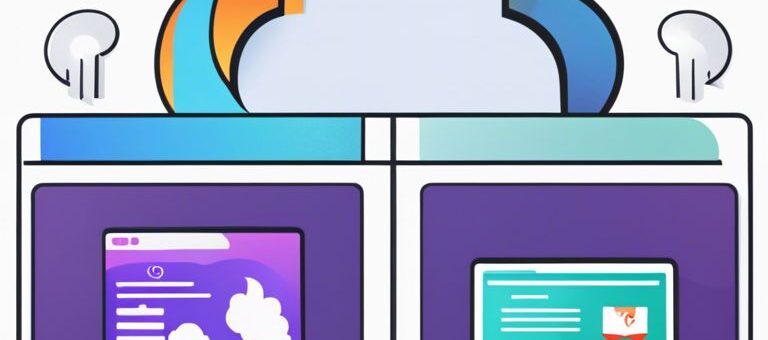Differences between Software as a Service (SaaS) and traditional software can make or break your business success today. I’m here to help you navigate through the chaos of tech choices! While traditional software often demands hefty upfront investments and installations, SaaS delivers flexibility and affordability through subscription models. You’ve got to get savvy about what fits your needs – understanding these distinctions can empower your decisions, save you time, and money. Let’s investigate the key differences so you can make informed choices for your future!
Understanding Software As A Service (SaaS)
Definition and Overview
Overview, it’s crucial to grasp what Software as a Service (SaaS) really is. Essentially, SaaS is a cloud-based service where applications are hosted by a vendor and made available to customers over the internet. You don’t have to worry about installation or maintenance on your devices; everything lives in the cloud. This means immediate access without the hassles of traditional software deployment. I’m talking about convenience that just doesn’t compare to the old-school methods. You can log in from any device, anywhere, and get cracking on your projects.
The SaaS model has dramatically changed how businesses operate by minimizing upfront costs and simplifying the user experience. You pay a subscription fee, and in return, you not only get the software but also continuous updates, scalability, and a security infrastructure that would cost an arm and a leg to build on your own. Just imagine the freedom of not being tied to a single machine or risking data loss with outdated software. That’s the new age of software management.
Key Features of SaaS
SaaS comes loaded with a wealth of features that can totally flip the script on how you manage your tech resources. With its unique offering, you get flexibility and fast access that you simply can’t get with traditional software. Let’s investigate the critical features that make SaaS such a game-changer:
- Cloud-based access: Work from anywhere with an internet connection, which means your office can be wherever you are.
- Subscription-based pricing: Pay as you go rather than making hefty one-time purchases.
- Automatic updates: You’re always using the latest version without lifting a finger.
- Scalability: Easily add or reduce services depending on your evolving needs.
- Collaboration tools: Built-in features encourage teamwork, letting multiple users work together seamlessly.
- Robust security: Strong safety protocols ensure your data is safe, which is often better than DIY solutions.
- Integrations: Easily connect with other tools and platforms to enhance functionality.
This landscape is a goldmine of opportunities for anyone looking to modernize their software consumption.
SaaS not only streamlines processes but does so with elegance and efficiency. Its cloud-based access allows you to work on the go, while the subscription-based pricing model means you don’t have to break the bank every time you want to access advanced features. This makes it particularly attractive for startups and small businesses that are looking for agile solutions.
For instance, consider a team of remote workers using a SaaS platform to collaborate on projects. They benefit from automatic updates and robust security measures, while the collaboration tools ensure they remain in sync no matter where they are located. This ability to stay connected and efficient, without extra costs, makes SaaS an undeniable winner in the tech space.
Traditional Software Explained
There’s a lot to unpack when we talk about traditional software. Traditional software refers to applications that are installed directly on your computer or local servers. Think of your favorite desktop applications like Microsoft Office or Adobe Photoshop. Once you purchase a license, you download that software onto your machine, and it’s yours forever—well, at least until you need to update it or buy a newer version. This model is as old-school as it gets, and while it has its perks, we’ve got to recognize that it’s not always the most flexible or cost-effective solution out there.
What is Traditional Software?
Traditional software is imperatively a one-time purchase model where you pay upfront for the software and gain access to its full features. You’re installing it on your hardware, and you’re responsible for maintenance and upgrades. You may need to schedule those updates or worse, deal with pesky compatibility issues because your software is designed to run on a specific operating system. So, if your hardware goes kaput, you could be left scrambling to recover lost data or re-install everything from scratch. Talk about a headache!
Key Characteristics of Traditional Software
Characteristics of traditional software revolve around several key aspects that define how it operates. First off, you’re often dealing with a one-off payment. This means you shell out the cash at the beginning and cross your fingers that you won’t need to go back to the bank too soon for updates. And while versatility can be a great selling point in some cases, traditional software usually locks you into the version you bought. You are also put in charge of your own troubleshooting and maintenance, which, let’s be real, can be a pain when technical difficulties arise.
Traditional software has its ups and downs, but it’s important to pinpoint the pros: you have control over your data, potentially higher performance, and the ability to use the software offline. But let’s not forget about the negatives: limited flexibility, upfront costs, and that looming fear of needing tech support to navigate around issues. I mean, if you’re not tech-savvy, it can feel like being lost in a maze without a map. Ultimately, understanding these characteristics helps you better determine what’s the right software path for you and your business.
Comparing SaaS and Traditional Software
Some folks get hung up on the differences between Software as a Service (SaaS) and traditional software. But let’s break it down in a way that makes sense for you. Whether you’re a business owner, a tech enthusiast, or just someone trying to figure out what the best choice is for your needs, I’m here to help clarify things. Let’s investigate some key comparisons that define these two approaches.
| SaaS | Traditional Software |
|---|---|
| Accessed via the internet | Installed on local servers or machines |
| Subscription-based pricing | One-time purchase or licensing fees |
| Automatic updates from the provider | User handles updates and maintenance |
| Scalable based on usage | Scalability may require additional purchases |
Cost Structure Comparison
Any conversation about cost when comparing SaaS and traditional software has to address the elephant in the room: upfront costs. With SaaS, you’re looking at a subscription model, often backed by lower initial fees. You pay monthly or annually, which can be fantastic for cash flow management. On the flip side, traditional software usually demands a heftier upfront investment. I know that can feel like a big commitment!
But let’s not forget about the long-term implications. While traditional software might seem cheaper in the short term, those ongoing costs—like maintenance and upgrades—can creep up on you. SaaS providers handle all that for you, which can actually save money in the long run. Seeing it clearly yet?
Deployment and Accessibility
For anyone who’s dealt with software deployment, you know it can be a total nightmare—especially with traditional software. Setting it up on your own machines can take ages, and don’t even get me started on system compatibility issues! SaaS, on the other hand, is as easy as firing up your browser. You have quick access from virtually anywhere, making remote work or multi-location operations a breeze.
Comparing these two models really highlights how SaaS shines in terms of accessibility. You’re not tied down to a physical location or specific hardware. That flexibility is a game-changer for many businesses, particularly with the current trends in remote work. Pair that with a mobile-compatible platform, and it becomes hard to argue for traditional installations.
Maintenance and Updates
Structure matters in the software world, and how you maintain that structure is critical. With traditional software, you’re responsible for updates—an ongoing headache if you ask me. You’ll need to schedule downtime, manage backups, and ensure compatibility. SaaS simplifies this. The updates are automatic, and you can jump right into the latest features without any hassle. No more late-night patching sessions!
Updates are something we often remind ourselves to appreciate. With SaaS, you can enjoy the peace of mind that comes from knowing all that is handled for you. You get the latest technology and features right when they’re ready. Why complicate your life when you can keep it simple?
Scalability Potential
Traditional software can be a real bear when it comes to scaling up. Let’s face it, most vendors throw you into a situation where you’ll either have to purchase new licenses or upgrade hardware—both can drive your costs through the roof! In contrast, SaaS offers impressive scalability tailored to your needs. If your usage grows, you can just adjust your subscription instead of having to worry about individual purchase decisions.
The amazing thing about SaaS is how it allows for real-time adjustments. You can easily scale up or down based on your company’s demands, which is something traditional setups just can’t match. This flexibility is vital in today’s fast-paced business world.
After all is said and done, when comparing these software models, it’s crucial to weigh all these factors based on your unique circumstances. That’s the power of informed decision-making!
Final Words
Taking this into account, I believe it’s crucial to understand that choosing between Software as a Service (SaaS) and traditional software isn’t just about what’s trendy; it’s about what aligns best with your goals and needs. If you’re someone who values flexibility, scalability, and access to the latest features without the hassle of updates, then SaaS is likely the route you want to take. But if you prefer control over your software environment and can handle the upfront costs, traditional software might be the way to go. You really have to weigh your priorities, especially in the fast-paced digital landscape we thrive in today.


